Energy and Calm: A Winter Yoga Sequence
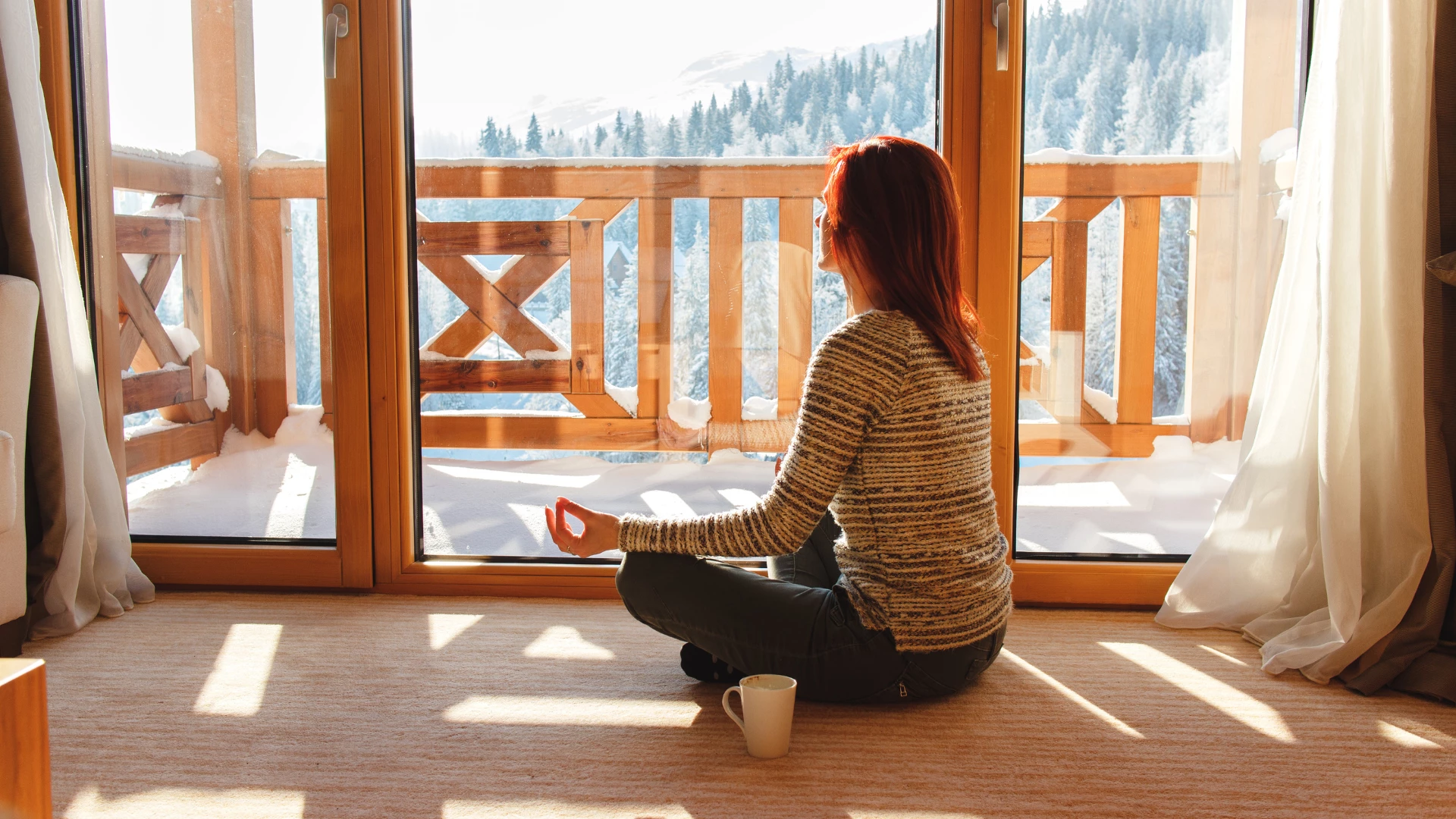
Article At A Glance
Let’s be honest. Winter isn’t easy on our bodies, minds, and spirits. The holidays can leave us sluggish from too much rich food, our adrenaline depleted from packed schedules, and though there’s much joy in the air, we grieve those lost.
Following that, the months grow colder. Our bodies shield against frigid temperatures and crave sunshine. Crouching inward can make us feel tight and tense. Our bodies need more sleep, but we can’t always get it. Our to-do lists and our days are no shorter. Rather than feeling calmly energized, we can feel exhausted and frenzied.
Can yoga help? We know one thing for sure: yoga can help us balance our systems to reach or get significantly closer to calm energy. The gentle movement followed by time for stillness can be a great way to do that in the winter months. The following sequence offers that. Put on some cozy clothes and calming music—or none at all, if silence is more grounding for you—and jump into some yoga to feel grounded and balanced in the winter months!
How to Cultivate Energy and Calm in a Short Yoga Sequence
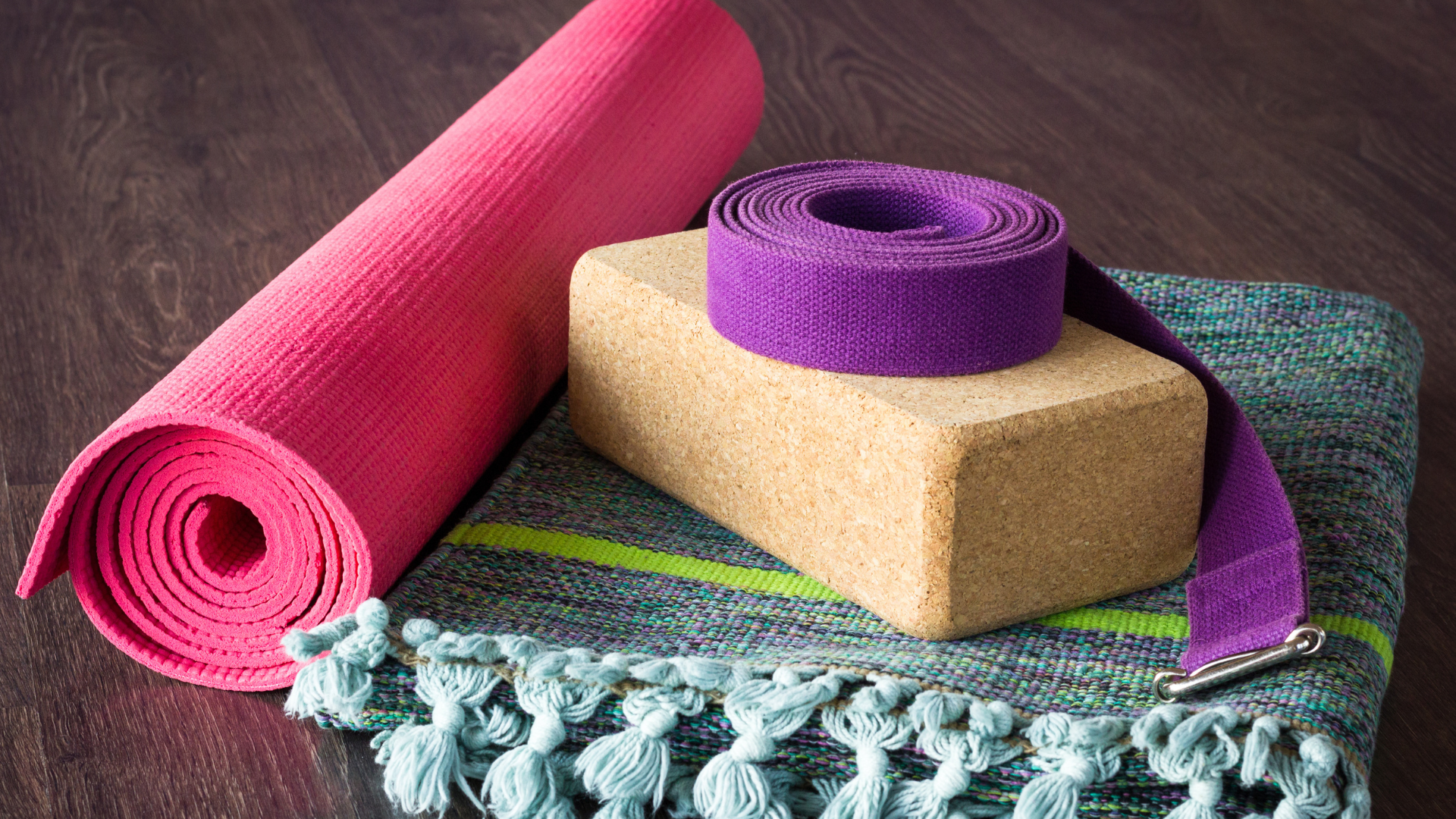
First, gather some props. Here’s what you’ll need for this practice:
- Yoga blocks
- Yoga blanket (or fluffy bath towel)
- Yoga strap (or belt)
- Yoga mat (or rug, as long as the surface is soft)
Proceed carefully if you’re doing the following sequence without warming up or coming from another asana practice or another physical activity. Don’t go to the limits of your flexibility; listen closely—and then respond to what your body is telling you.
A Winter Yoga Sequence: Seated Cat/Cow Pose (Marjaryasana/Bitilasana)
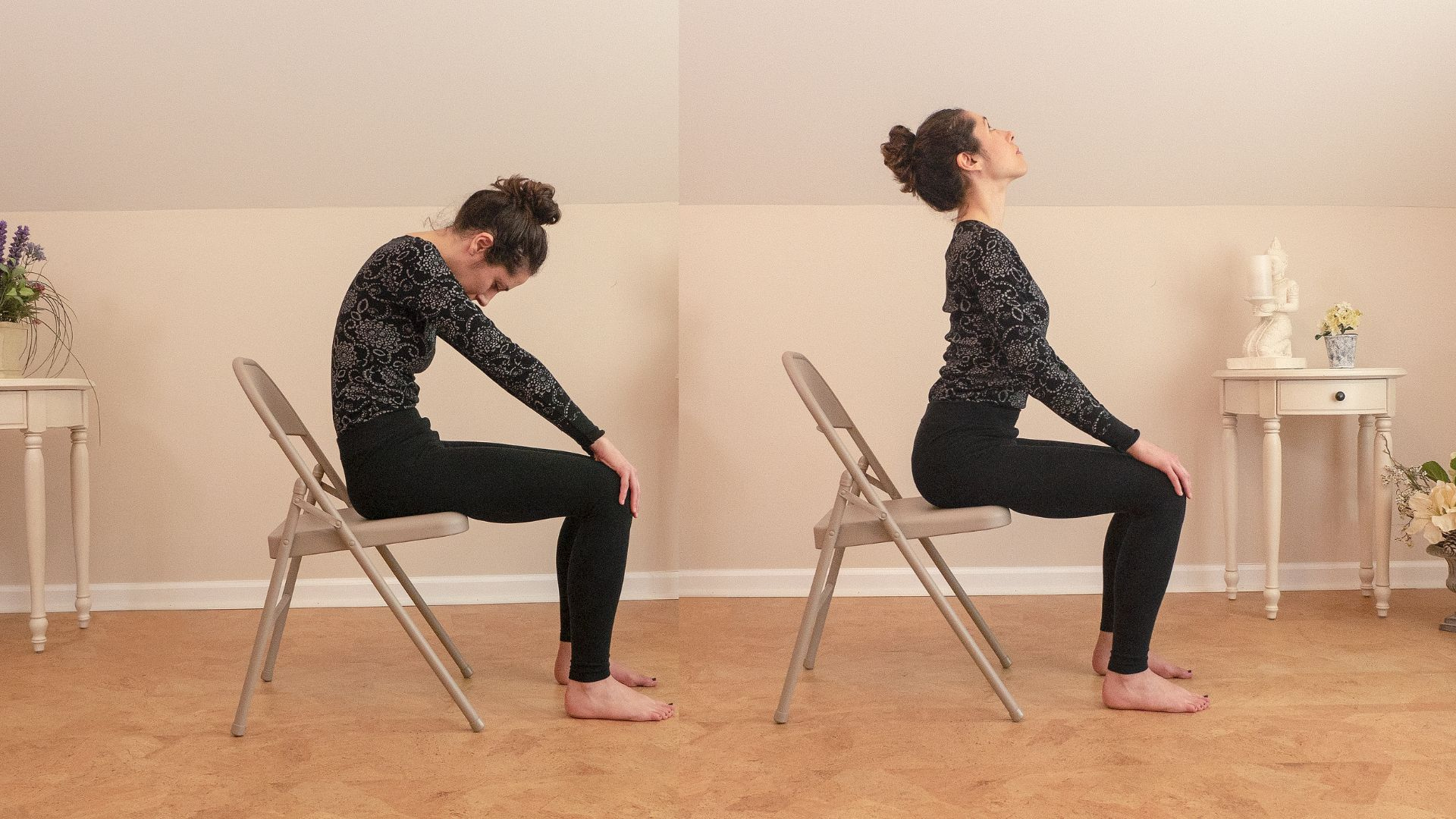
- Make a “blanket roll” by folding your yoga blanket or towel twice (in half and then in half again) and then rolling it from one side to the other. Fix any bumps that might be uncomfortable and distract you, and place it to your side, within reaching distance. You’ll need it later on in the sequence.
- Begin in Easy Pose (Sukhasana), ankles crossed. If there’s another seated pose that’s more suitable for you, for example, Thunderbolt Pose (Vajrasana), start there instead.
- Feel rooted through your seat but long and tall through your spine. Imagine energy rising from the top of your head and shooting down through your seat.
- Take a few deep breaths, noticing how your body feels today. What does it need, and what does it not need? If it’s comfortable for you, close your eyes so that you can turn inward more deeply. After a few deep breaths, flutter your eyes gently back open.
- On a breath in, raise your heart to the sky. Let your neck fall back in the natural flow of your spine, as much as is comfortable for you here. A feeling of stretch is good; anything more intense or anything in the realm of pain is not. This is your Cow Pose.
- On a breath out, draw the tip of your tailbone down and forward while you scoop your belly toward your spine. Your torso will make a curved “c” shape. As with Cow Pose, let your neck naturally follow the flow of movement so as long the sensation isn’t too intense or painful. This is your Cat Pose.
- Take that flow 5 to 10 more times, depending on your available time and energy level.
- Following that, take a few breaths to notice how you feel. Check back in with the rooting through your seat and your spine lengthening.
“Stirring the Pot”: Gentle Winter YoGa
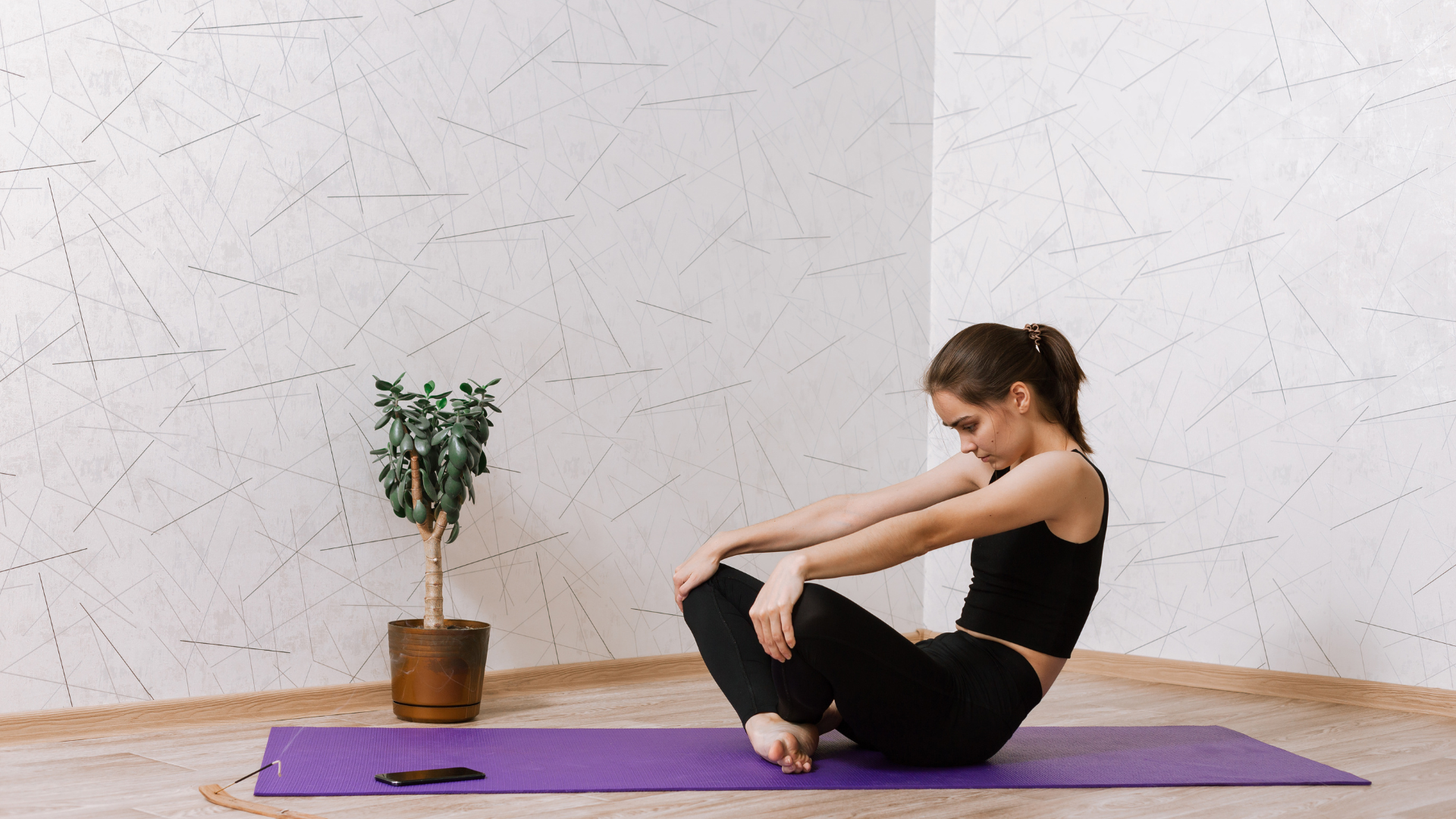
- When you’re ready, remaining in Sukhasana, begin making a circle with your ribcage in whatever direction feels right to you. You’ll end up going in both directions so it doesn’t matter which one you start with. Go to the side, forward, to the other side, and then back. You’re effectively adding side-to-side and diagonal aspects to your Cat/Cow flow so that it becomes a full circle. Don’t worry about the size of the circle; the sensation and flow of movement are far more meaningful here in this winter yoga asana.
- Take 3 to 5 more circles, if you have the time and energy level for it, in this direction.
- Change direction, and do the same number of circles as you did in the other direction.
- Take a moment for a few breaths before moving on, noticing the resonance of movement through your body and any messages it has for you. Does that resonance of movement feel energizing? Is that something that you can use in these winter months? This is also great yoga for feeling sluggish from too much rich holiday food!
Reclining Big Toe Pose (Supta Padanghustasana) 
- Lie down on your back. Make sure your strap or belt is within reaching distance.
- When you feel ready, bend your left knee and hug it close to your chest. Hold just below the knee rather than putting pressure directly on your knee. Loop the strap or belt around the arch of your left foot, holding it with one or both hands. You can lengthen your right leg onto the floor or keep your right foot grounded and that knee bent, which helps you feel stable and breathe smoothly.
- Straighten your left knee, but keep a slight bend there, adjusting the angle of your leg so that you feel a gentle stretch in your hamstrings. Bend your knee more if the sensation is too intense or if you feel pain. Remember that the cold of winter can make our muscles tighten up, and stretching forcefully can cause injury.
- Feel your left hip move away from your head and your right hip move toward it. You can assist with this action by placing your left thumb in your left hip crease and pressing into your hip crease while you hold the strap in your right hand.
- Hold this stretch for 5 to 10 breaths, breathing easy and noticing what your body is telling you throughout. The point is not a “huge” stretch or to get your leg to touch your face, but to gently and patiently find just a little more space in your body while you remain comfortably grounded. Doesn’t this winter yoga feel nice?
Supine Twist (Supta Matsyendrasana)
- Release the strap and place it at your side (you’ll need it to practice on your second side). Bring your left knee into your chest. Take any little movements that might feel good for you, such as little hip circles or taking your knee side to side. If stillness is what helps you to feel grounded and peaceful in this moment, there’s no need to move your leg at all.
- Shift your hips slightly to your left. If you’ve lengthened out your right leg and need your right foot grounded to shift your hips, go ahead and place it down before shifting your hips. On a breath out, let your left knee fall toward your right so that you end up in a gentle twist. Keep your left shoulder blade on the floor. This means that your left knee will likely be “floating” above the floor. Allow your knee to float rather than trying to force it to the floor. Gaze toward your left.
- Can you make your pose feel even better, even more grounded, soothing, and calming? As you breathe out, try to release any tension you may notice in your face or shoulders. Feel like your head is melting toward your left as if you had eyes in the back of your head and they were softening in their sockets.
- After 5 to 10 breaths, release the pose and return to lying on your back.
- Practice Supta Padangusthasana and Supta Matsyendrasana on your second side, starting with drawing your right knee toward your chest.
Winter Yoga: Reclining Bound-Angle Pose (Supta Baddha Konasana) and Meditation 
- Raise back up to a seated position so that you can set up your blanket roll for your final resting pose. Place one end of your blanket roll just above your sacrum (the big flat bone right above your tailbone). Make sure that your blocks are within reaching distance before you settle on your back again.
- Recline over your blanket roll. The roll should also support your head, but if it doesn’t, you can use an additional block, or one or two pillows (depending on thickness), to accomplish that. The important thing is that your joints are supported and that you feel grounded. Make sure your head is not tilting back; your forehead should be slightly higher than your chin. If your head tilts back, place a pillow under your head and neck.
- Bend your knees and press the bottoms of your feet together. Place one block under each thigh, just above your knees, to elevate your knees. This is your Supta Baddha Konasana.
- Breathe deeply here, letting your body settle into the support that the pose is offering you. Imagine a beautiful winter wonderland scene. Snow is falling down gently, and it’s peaceful and quiet. It’s chilly out, but you feel warm, content, and supported. If another image, mantra, or simply listening to your breath serves you better, practice that instead.
- Stay here in this grounded, supported pose, with your chosen image or another meditative tool, for as long as it feels right for you.
- When the time is right, gently come out of the pose. A supportive way to do so is to move your props to your side and roll to a fetal (curled) position on one side. Gently, patiently push yourself up to a seated position.
- When it serves you, rise to stand. Can you continue your day with calm energy, enjoying the residue of this grounding practice?
Also, read...
Warrior I Pose: 5 Strengthening Variations
Deepening Your Home Yoga Practice: An Interview with Judith Hanson Lasater
4 Easy Ways to Use a Sandbag in Yoga Practice
Related courses
Breath as Medicine: Yogic Breathing for Vital Aging
Yoga and Myofascial Release: Releasing Chronic Tension with the Bodymind Ballwork Method
Yoga and Detoxification: Tips for Stimulating Lymphatic Health
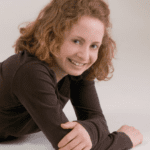
Kathryn Boland is an RCYT and R-DMT (Registered Dance/Movement Therapist). She is originally from Rhode Island, attended The George Washington University (Washington, DC) for an undergraduate degree in Dance (where she first encountered yoga), and Lesley University for an MA in Clinical Mental Health Counseling, Expressive Therapies: Dance/Movement Therapy. She has taught yoga to diverse populations in varied locations. As a dancer, she has always loved to keep moving and flowing in practicing more active Vinyasa-style forms. Her interests have recently evolved to include Yin and therapeutic yoga, and aligning those forms with Laban Movement Analysis to serve the needs of various groups (such as Alzheimer’s Disease patients, children diagnosed with ADHD, PTSD-afflicted veterans – all of which are demographically expanding). She believes in finding the opportunity within every adversity, and doing all that she can to help others live with a bit more breath and flow!



